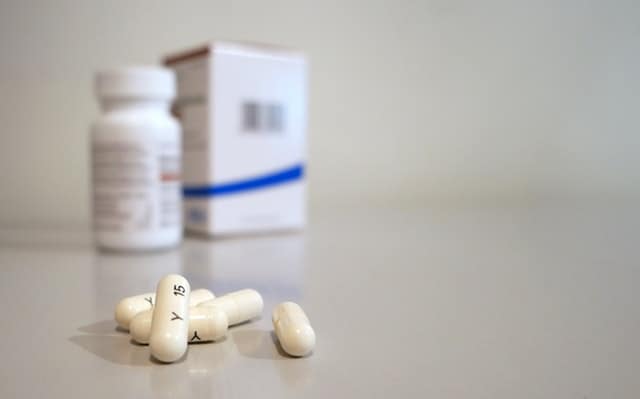For many of those who have unintentionally become addicted to their opioid prescription painkillers, and definitely those who have abused opioids, such as heroin, for solely recreational purposes, the first step of any rehab treatment is detoxification, and that may require the use of opioid withdrawal medication to ensure their safety. For those who think opioid withdrawal surely isn’t dangerous, let alone fatal, we encourage you to think again. The abrupt cessation of opioids can produce opioid withdrawal syndrome (also known as opioid discontinuation syndrome) – a set of particular symptoms that occur when there is a discontinuation or dosage reduction with some opioid-based medications and recreational drugs. Its risk and severity is predominantly governed by the daily amount used, the historical length of use, and the genetics of those concerned. If left unmanaged, it can prove to be fatal through heart failure.
“Pharmacotherapies for opioid addiction include either detoxification or long-term agonist maintenance. Agonist maintenance therapy is currently the recommended treatment for opioid dependence due to its superior outcomes relative to detoxification. Detoxification protocols have limited long-term efficacy and patient discomfort remains a significant therapy challenge.”
– Dr. Angela L. Stotts, Ph.D., Professor, Family And Community Medicine, McGovern Medical School, University of Texas
For many, many centuries, people across the world have known of the medicinal and recreational properties of the humble poppy plant – Papaver somniferum, being its grand Latin name. In fact, the Sumerian clay tablet, which dates to around 2100 BC (yes, Before Christ…) is considered to be the world’s oldest recorded list of medical prescriptions, and some scholars report that the opium poppy is referred to on it. From this brightly-colored, often fragile-looking plant, many different cultures have extracted the opium (or opiate) within, found in the milky fluid (or latex) that seeps from cuts in the unripe poppy seed pods. Around 12% of opium is made up of the analgesic alkaloid morphine, which is today processed chemically to produce heroin and other synthetic opioids for medicinal use and for the illegal drug trade. Yes, that humble little plant (obviously helped along by the greed and dominance of powerful pharmaceutical companies across the world) remains the actual source of the opioid epidemic that has so tragically gripped the U.S. and resulted in the premature deaths of thousands and thousands of its citizens. However, how the U.S. got to this point is now somewhat inconsequential (as long as the pharmaceutical companies involved in the false marketing of their opioid painkillers are fully brought to book). The opioid epidemic is here, and its effects will last for many years – decades, even. What is highly consequential is how we safely detoxify today’s opioid-addicted patients, whether we do that with or without the use of opioid withdrawal medications, and then how we move on to effectively treat their dependence. That is the key to pushing the opioid epidemic off the streets of the U.S., and into our high schools’ history books, where, hopefully, it will stay.
The Differences Between Medications for Managing Opioid Withdrawal & Medications for Assisting Long-Term Opioid Addiction Treatment
Excuse the rather long title, but this is an extremely important point. There is a distinct difference between the medications (both opioid-based and non-opioid) that are available to medical staff to use during the actual opioid detoxification process, especially if the presence of opioid withdrawal syndrome is detected and those which are used in subsequent opioid replacement therapy if that is deemed necessary as part of longer-term addiction treatment. This difference is important primarily because the actual drugs used for both periods of treatment may be the same in nature; for example, methadone can be used during both detox as a way of nullifying certain effects of opioid withdrawal, and during the subsequent longer-term treatment as a clinically-administered opioid replacement. Before we look at exactly what opioid withdrawal medications are available for safely managing a medically-supervised opioid detox, let’s first address the extent of symptoms that can be experienced by those undergoing the process to remove all of the opioid-related toxins from the body, and why opioid withdrawal syndrome can prove fatal if left untreated.

Opioid Withdrawal: Symptoms, Severity & Opioid Withdrawal Syndrome
Anyone who has used opioid prescription painkillers, even if they have used the medicine as directed by their physician, without any misuse whatsoever, will experience some form of discomfort, however mild when they stop taking the prescription. It may not even register as a form of opioid withdrawal, but the discomfort will be there, nonetheless. This is simply because opioids in any form are powerful drugs that directly affect the brain and its normal function.
Common Types of Opioids & Their Street Names
Sadly, this is probably more relevant and of more use to the parents or carers of those using or misusing opioids. According to the DEA’s “Drugs of Abuse” publication (2017), the street names of commonly abused opioids include: Heroin
- Brand Names: N/A
- Street Names: Brown sugar, china white, dope, H, horse, junk, skag, skunk, smack, white horse, cheese
Codeine
- Brand Names: N/A
- Street Names: Captain Cody, cody, lean, schoolboy, sizzurp, purple drank, doors & fours, loads, pancakes and syrup
Fentanyl
- Brand Names: Actiq, Duragesic, Sublimaze
- Street Names: Apache, china girl, china white, dance fever, friend, goodfella, jackpot, murder 8, tango and cash, TNT
Hydrocodone and dihydrocodeinone
- Brand Names: Vicodin, Lortab, Lorcet
- Street Names: Vike, Watson-387
Hydromorphone
- Brand Names: Dilaudid
- Street Names: D, dillies, footballs, juice, smack
Meperidine
- Brand Names: Demerol
- Street Names: Demmies, pain killer
Methadone
- Brand Names: Dolophine, Methadose
- Street Names: Amidone, fizzies, chocolate chip cookies
Morphine
- Brand Names: Duramorph, Roxanol
- Street Names: M, Miss Emma, monkey, white stuff
Oxycodone
- Brand Names: OxyContin, Percodan, Percocet
- Street Names: O.C., oxycet, oxycotton, oxy, hillbilly heroin, percs
Oxymorphone
- Brand Names: Opana
- Street Names: Biscuits, blue heaven, blues, Mrs. O, O bomb, octagons, stop signs
Disorders Associated with Opioid Withdrawal
According to the “Diagnostic and Statistical Manual of Mental Disorders” (5th Ed.), known as DSM-5, the following disorders must first be ruled out when treating a patient with opioid withdrawal: Opioid-Induced Mental Disorder: It is clinically evident that opioid drug abusers are prone to the development of a co-occurring disorder, where they also often diagnosed with a mental health disorder. These can include:
- Depression
- Dysthymia, a persistent depressive disorder, and
- Opioid-induced depressive disorder
Other Substance Intoxication: Alcohol intoxication, hypnotic, or anxiolytic intoxication can cause a similar clinical presentation of opioid intoxication, and must also be ruled out before medically treating opioid withdrawal. Other Withdrawal Disorders: Sedative-hypnotic withdrawal symptoms may also look like opioid withdrawal. However, they do not include the following symptoms of opioid withdrawal:
- Lacrimation (tears)
- Rhinorrhea (runny nose), and
- Pupillary dilation
Hallucinogen and stimulant intoxication is also likely to cause pupillary dilation, but it doesn’t induce other opioid withdrawal symptoms, such as nausea, diarrhea, vomiting, lacrimation, and rhinorrhea.
Common Opioid Withdrawal Timelines
Opioid withdrawal from using short-acting opioids, such as heroin, usually begins 8-24 hours after last using the drug, and the symptoms described above will last between 4-10 days. Long-acting opioids, like methadone, usually present opioid withdrawal symptoms within 12-48 hours after the last use and will last for approximately 10-20 days.
The Agony of Opioid Withdrawal – TED Talk by Travis Rieder
What are the Main Symptoms of Opioid Withdrawal?
The main symptoms of opioid withdrawal include:
- Nausea
- Diarrhea
- Vomiting
- Anxiety
- Insomnia
- Hot and cold flushes
- Sweating
- Muscle cramps
- Lacrimation
- Rhinorrhea
Observation & Monitoring of Patients Experiencing Opioid Withdrawal
All patients who are experiencing opioid withdrawal, either within an emergency room or detoxification setting, should be monitored regularly 3-4 times daily (at least) for symptoms and possible complications that may arise. Clinicians and physicians use the Short Opioid Withdrawal Scale for the monitoring of a patient’s withdrawal.

What Medications Can Be Used During Opioid Detoxification?
Before we look at the medications themselves, an explanatory word about how opioids affect certain receptors in the brain.- it’s why users can feel a sense of euphoria when taking their opioid-based prescriptions, and exactly why people can become addicted.
Brain Receptors, Dopamine & Opioid Agonists and Antagonists
Opioids affect us by attaching to certain receptors in our brains. Normally, these opioids are the endogenous variety that we create ourselves, naturally, in our bodies. Once they attach fully, they send signals which block any pain, slows our breathing, and makes us feel calm and at ease. They do this by flooding our brain’s reward system with dopamine, a chemical neurotransmitter that evokes a feeling of happiness. Drugs such as opioids are known as agonists – they activate particular receptors in our brains. A full agonist will activate the opioid receptors fully, resulting in the full opioid effect. Full opioid agonists include:
- Heroin
- Oxycodone
- Methadone
- Morphine
- Hydrocodone, and
- Opium
Drugs called opioid antagonists will also attach themselves to these same receptors, but with the completely opposite outcome. They bind to the receptors more strongly than agonists are able to do, but they do not activate those receptors, preventing the body from responding to opioids and endorphins. Naloxone, used in cases of opioid overdose, and naltrexone, used in the long-term treatment of opioid addiction, are primary examples of opioid antagonists.
Opioid Withdrawal & Detox Medications
When opioid withdrawal symptoms are present, the pharmacological management of opioid withdrawal is done by using one of the following medications:
- Methadone: Gradual cessation of a full opioid agonist
- Buprenorphine: Short-term use of a partial mu-opioid agonist ( the mu-opioid receptor is pivotal in the development of an addiction), or
- Naloxone / Naltrexone: Detoxification using opioid antagonists (either of these antagonists will quicken the detox process, resulting in a precipitated or abrupt withdrawal. Even though it is quicker, it is far more uncomfortable for the patient)
In addition to these agonists and antagonists, other medications may be given to alleviate particular opioid withdrawal symptoms (known as symptomatic treatment), including:
- Loperamide for diarrhea
- Promethazine for nausea/vomiting
- Ibuprofen for myalgia (muscle pain), and
- Clonidine for reducing blood pressure
Methadone
Methadone is a synthetic opiate used in the treatment of Opioid Use Disorder (OUD). It is a long-acting full opioid agonist, and a schedule II controlled medication. Since the 1950s, it has been actively used as a medication-assisted treatment (MAT) for addiction to heroin and opioid pain management prescriptions. In addiction treatment, methadone reduces opioid craving and withdrawal and is available as a liquid, powder, tablets, and as diskettes. As with all medications used in MAT, methadone is prescribed as part of a comprehensive treatment plan that should include both counseling and therapy. Methadone can be given in either an inpatient or outpatient treatment setting, with the daily dosages being tapered down over the course of the detox.
Buprenorphine
Buprenorphine is a semi-synthetic opioid derived from thebaine, an alkaloid of the opium poppy Marketed under the brand name Subutex, amongst others, it is an opioid partial agonist, producing a sufficient agonist effect(and not the full effect described above) to assist opioid-addicted patients to undergo detoxification while lessening their withdrawal symptoms. For the purpose of detoxification, buprenorphine (sublingual – dissolved under the tongue) of 4-12 mg initially can be given as an alternative to methadone and is then tapered over 5-10 days. Buprenorphine can actually precipitate opioid withdrawal symptoms in those undergoing detox, who don’t display the usual withdrawal symptoms. Ideally, it must be started 12-18 hours after the individual’s last use of short-acting agonists, like heroin or oxycodone, and 24-48 hours after the last use of long-acting agonists, like methadone.
Treating Opioid Addiction With Subutex
Subutex is a brand name for the drug, Buprenorphine. Subutex came out in October of 2002. It is given to patients in a pill form that is actually a sublingual tablet. Subutex is a mixed opioid agonist, which means it blocks the effects of opiates on the body. Subutex comes in two different strengths. There is Subutex 2mg, and Subutex 8mg. Those with long-term addictions to opioid drugs might need a stronger form of this medication. This drug works the best when it is given as soon as opioid withdrawal symptoms begin. It can be given as soon as 4 hours after the last dose of opioids has been taken.
Subutex Treatment and the Risk of Addiction
The main problem with Subutex is that it can lead to addiction in some cases. Most of the time, an addiction to Subutex doesn’t have the opportunity to occur. This is because the drug is usually stopped soon after it is started. However, there may be some cases where keeping someone on Subutex long-term is preferable. In the event that this does occur, a Subutex addiction is possible. Subutex addiction can occur when someone has been taking the drug for too long. It can also happen when Subutex is abused. Subutex abuse happens far too often. People can crush and snort the pills, or even dissolve them and inject them. Sometimes people simply take too many pills at one time to get high. Even so, Subutex does seem to be a better alternative for opioid treatment than some other methods. This is why it has become so popular.
Naloxone / Naltrexone
Naloxone is an opioid antagonist medication primarily used to reverse the toxic effects of an opioid overdose. Sold under the brand name Narcan, amongst others, it is commonly used for decreased breathing in opioid overdose. Naloxone is also used in MAT for opioid addiction treatment, where it can be combined with an opioid to decrease the risk of opioid misuse. Opioid overdoses can occur in a number of ways:
- When a patient misunderstands the directions of use for their prescription, accidentally takes an extra dose, or deliberately misuses an opioid prescription or an illicit drug like heroin.
- When a person takes opioid medications prescribed for someone else, or
- When a person mixes opioids with other medications, alcohol, or over-the-counter drugs
Opioid overdose is life-threatening and requires immediate emergency attention – naltrexone is championed by the Substance Abuse & Mental Health Services Association (SAMHSA) as a life-saving medication. Naltrexone is a medication primarily used to treat OUD and alcohol use disorders (AUD). The tablet form of naltrexone (ReVia, Depade) is prescribed at 50 mg once per day to remove opioid cravings and effects. The injectable extended-release form of the medication (Vivitrol) is administered at 380 mg (intramuscular) once a month for the same purpose. Usually, when used in a MAT setting, and to reduce the risk of precipitated withdrawal, patients must abstain from illegal opioids and opioid medication for a minimum of 7-10 days before starting the treatment, such as with detox. Because of how naltrexone works, there is no abuse and diversion potential with the medication. If a person relapses and uses an opioid, naltrexone will prevent the feeling of getting high. However, in a detox setting, and as mentioned earlier, naltrexone can be used to precipitate withdrawal from opioids.
Lofexidine: The Opioid-Free Option for Opioid Withdrawal Management
Lofexidine, sold under the brand name Lucemyra (amongst others), is an oral medication historically used to treat high blood pressure. However, in May 2018, it was granted FDA approval to be used for the treatment of physical symptoms associated with opioid withdrawal. It is an α2A adrenergic receptor agonist and is very similar chemically to clonidine, another adrenergic receptor agonist. Lofexidine is used to facilitate a precipitated opioid withdrawal (and a rapid detox) in adults, as described above, and works by blocking the release of norepinephrine, a hormone similar to adrenaline that contributes to opioid withdrawal symptoms. For this purpose, it should be taken for around 14 days. However, lofexidine can cause serious side effects on your heart and/or blood vessels. You should advise your physician or clinician if you have ever experienced:
- Slow heartbeat
- Low blood pressure
- Heart problems, heart attack or stroke
- An electrolyte imbalance (such as low levels of potassium or magnesium in your blood)
- Long QT syndrome (in you or a family member)
- Kidney disease
- Liver disease
After Opioid Withdrawal Management & Detoxification
After the process of managing opioid withdrawal during detox, this is followed by a protracted withdrawal phase lasting for up to 6 months and characterized by a general feeling of not being well and strong cravings for opioids. These cravings, often intense, can lead to a relapse back into opioid use. To reduce this risk of relapse, and as highlighted previously, opioid detox should only be the beginning of an inpatient or intensive outpatient full opioid treatment program that includes:
- One-on-one counseling
- Group therapy
- Exercise & Nutritional education
- Behavioral therapy
- Anger management
- Dual diagnosis – specialized treatment for co-occurring disorders (if appropriate)
IMPORTANT: All detoxed opioid-dependent patients should be advised that they are at an increased risk of overdose, due to reduced opioid tolerance.


